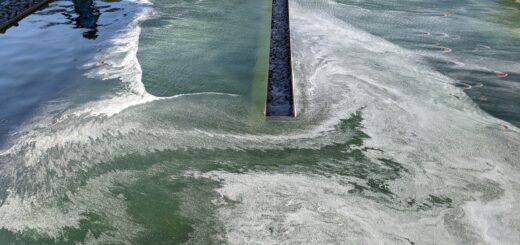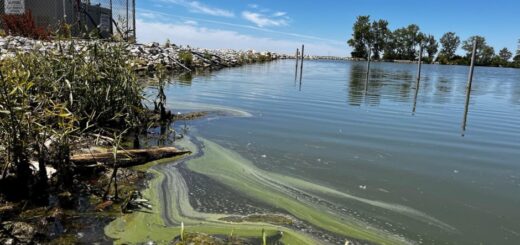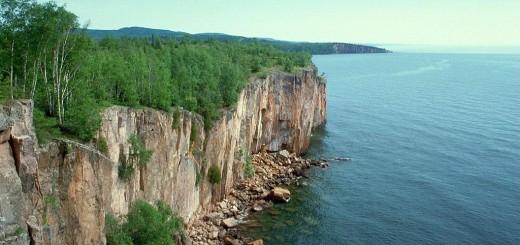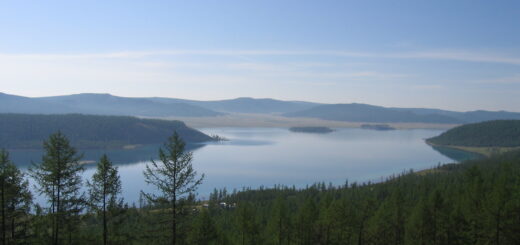Research Summary: Correlates Of Zooplankton Beta Diversity In Tropical Lake Systems
0Abstract
The changes in species composition between habitat patches (beta diversity) are likely related to a number of factors, including environmental heterogeneity, connectivity, disturbance and productivity. Here, we used data from aquatic environments in five Brazilian regions over two years and two seasons (rainy and dry seasons or high and low water level periods in floodplain lakes) in each year to test hypotheses underlying zooplankton beta diversity variation. The regions present different levels of hydrological connectivity, where three regions present lakes that are permanent and connected with the main river, while the water bodies of the other two regions consist of permanent lakes and temporary ponds, with no hydrological connections between them. We tested for relationships between zooplankton beta diversity and environmental heterogeneity, spatial extent, hydrological connectivity, seasonality, disturbance and productivity. Negative relationships were detected between zooplankton beta diversity and both hydrological connectivity and disturbance (periodic dry-outs). Hydrological connectivity is likely to affect beta diversity by facilitating dispersal between habitats. In addition, the harsh environmental filter imposed by disturbance selected for only a small portion of the species from the regional pool that were able to cope with periodic dry-outs (e.g., those with a high production of resting eggs). In summary, this study suggests that faunal exchange and disturbance play important roles in structuring local zooplankton communities.
Introduction
Beta diversity, that is, the change in species composition between habitat patches, is directly related to local or alpha-diversity (i.e., number of species within a particular habitat) and to regional or gamma-diversity (i.e., diversity in the different habitats within a region) [1], [2]. Understanding the mechanisms underlying beta diversity is one of the main goals in community ecology and interest in this area has increased substantially in the last decade [3], [4], [5].
Both deterministic and stochastic processes may affect beta diversity patterns. Deterministic processes are based on niche theory and assume that environmental filtering and biotic interactions play major roles in shaping local community composition. According to this theory, species have different ecological requirements, determining different responses to environmental gradients [6]. Stochastic processes are more related to the importance of colonization rates, random extinction and disturbance [7]. It is increasingly recognised that these processes shape the community structure simultaneously [8].

Paranoa Lake, Brazil. (Credit: Flickr User agentlebossanova via Creative Commons 2.0)
A number of factors have been shown to be important in predicting beta diversity. High spatial variation in environmental conditions allows species with different ecological requirements to occur in different sites, increasing beta diversity [9], [10], [11], [12]. Another important driver of beta diversity is the degree of spatial connectivity [10], [13], [14], [15]. Communities that are highly connected (e.g., by hydrological connections and smaller distance between habitats) may have lower beta diversity due to the higher exchange of individuals between these communities via active and passive dispersal. In addition, when connectivity is high, beta diversity can also decrease due to environmental homogenization [16], [17], [18], [19]. The degree of connectivity within a region can also vary over time. Lakes in river-floodplain systems, for example, tend to be highly connected to each other and with the main river during flood periods, leading to more similar communities and environmental conditions [17]. In addition, disturbances are, in general, responsible for a decrease in beta diversity [14], [20],[21], [22], as they impose environmental filters that select only portions of the species from the regional pools that are disturbance-tolerant [14], [21], [22]. On the other hand, disturbance can increase beta diversity in more isolated ponds as a result of stochastic recolonization and priority effects [23]. Temporary ponds undergo drastic disturbances, as they periodically dry up completely [24]. Finally, a positive relationship between beta diversity and primary productivity is expected due to a greater contribution of stochastic processes relative to deterministic ones in high productivity-environments [25], [26]. In regions with high productivity, a greater number of species can coexist and the composition of communities is likely to depend on the colonization history, such as priority effects [25], [27].
In this study, we tested the effects of environmental heterogeneity, spatial extent, hydrological connectivity (isolated vs. floodplain lakes), seasonality (wet season or high water period vs. dry season or low water period), disturbance (periodic dry-outs) and productivity (mean chlorophyll-a concentration) on beta diversity of zooplankton communities in five geographic regions of Brazil. We predicted that (a) lake systems that are more heterogeneous in their environmental conditions would have higher beta diversity, (b) regions where the spatial extent is larger (i.e., larger distances between studied local communities) would have higher values of beta diversity, (c) connected environments would have lower beta diversity than isolated environments due to their greater similarity in environmental conditions and/or greater dispersal rates, (d) beta diversity would be higher during the low water period or dry season, when there is less connectivity between environments, (e) temporary environments would have lower beta diversity as they undergo disturbances (periodic dry-outs), selecting species tolerant to these extreme conditions and (f) regions with higher primary productivity would have a higher beta diversity.
Full study, including methods, results and discussion, published under open-access license in PLOS ONE.













